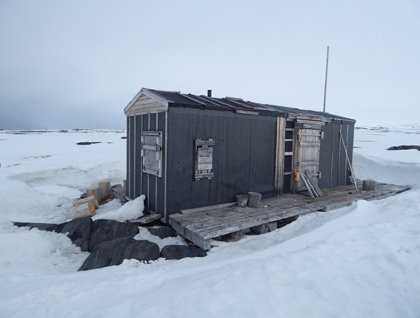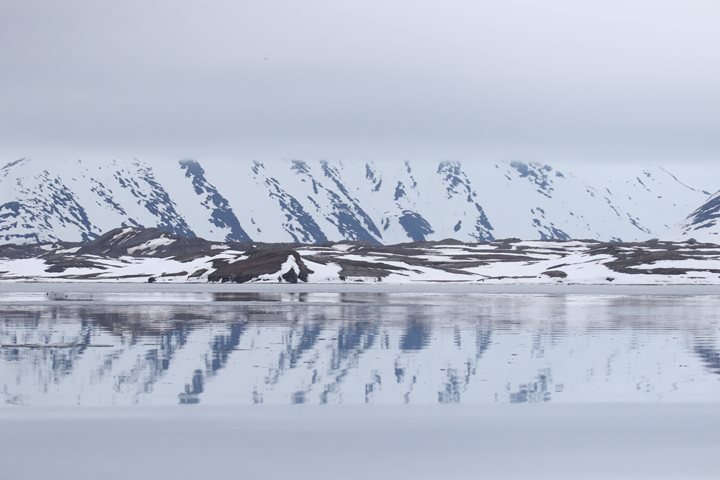Our morning began at the northern tip of Spitsbergen at a place called Mossellbukta. As we stepped out of the Zodiacs, all hikers were greeted with a trapper’s cabin. What struck me was the measures that were taken to ensure that this dwelling was as polar bear proof as could be. All windows and doors were reinforced. No food is ever stored in the cabin. Instead, about 50 feet away, a wooden tower stands tall where meat can be pulled high out of the reach of a hungry polar bear. Short hikers got the opportunity to scout out this area while the medium and long hikers moved on into the snow. We hiked onto a peninsula and received an entertaining account of Nordenskiold’s 1872-73 Arctic Expedition and were able to view the remains of the prefabricated cabin the expedition had erected. The long hikers trekked all around the surrounding area with a goal to locate reindeer. What we did find were polar bear tracks and a variety of birds such as the purple sandpiper, the eider duck, and the snow bunting.
During the afternoon excursion, our magnificent ship gently glides past the ice-covered shores of Northern Spitsbergen. Guests and crew eagerly search with binoculars and cameras for wildlife in the area. Our course is set for Liefdefjorden, a large arm of Woodfjord, where we can find a huge glacier called Monacobreen glacier. In this fjord, the waterway is covered with brilliant white fast ice. Shortly after entering the fjord, off in the distance, several reindeer can be seen slowly meandering along the ice. The captain slowed the ship so that we could take in the beauty of the reindeer, the incredible landscape of snow, and the massive glacier ahead of the ship.
Shortly after leaving the reindeer and the Monaco glacier, we had a surprise visit by a mother polar bear and her adorable cub. This little ball of fur was playful and silly. His mom was obviously insisting that he catch up with her, but he continued to take his time by sliding in the snow and stopping to smell the ground. As our ship drifted closer to the two polar bears, the cub stood up on his hind legs and faced us. The ships bow had a quiet hum of “awes” and a rush of camera clicks. He was just as curious about us as we were about him. The wild animals of Svalbard are even more spectacular than I could have imagined.
Our after-dinner treat came in the form of a “drift-by” of Moffen Island. As guests bundled up and grabbed cameras for the fourth time of the day, we were able to see a herd of Atlantic walruses hauled out ashore. Their massive bodies were almost lying on top of each other—something that is called thigmotaxis. We smiled at their antics—some drooled in their sleep while others postured to those around that annoyed them. As the adults lounged about, what appeared to be nine or ten younger walruses romped around in the ocean.







